|
Language is not a Reliable Instrument Interactive Audiovisual Installation by Zoltán SZEGEDY-MASZÁK |
|
Related work: Visual Communication - Hommage to Jonathan Swift
|
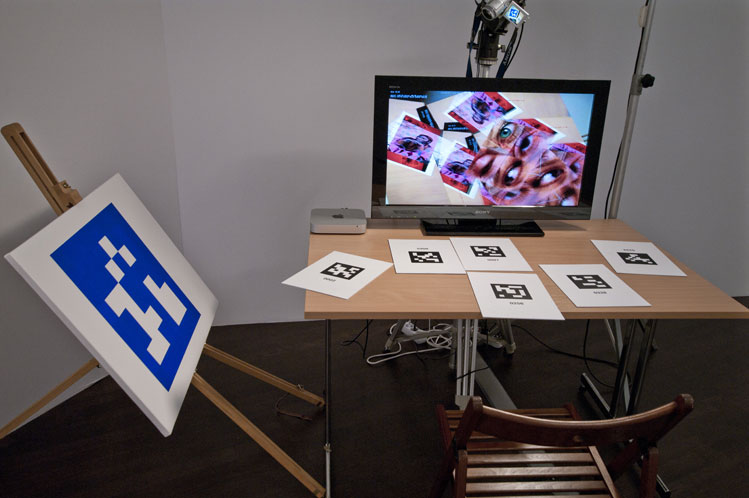 |
|
A table with a chair and a geometric painting on an easel stands in the exhibition room. On the top of the table a large monitor and stereo speakers are installed. Behind the table a video-camera and a reflector stands. The camera slowly scans the surface of the table and the painting back and forth. The monitor shows the live video image captured by the camera. Lying on the table, there are six A4 size plates with unintelligible geometric patterns on their both sides. The visitor can rearrange the order of the plates and show each of them to the camera independently. |
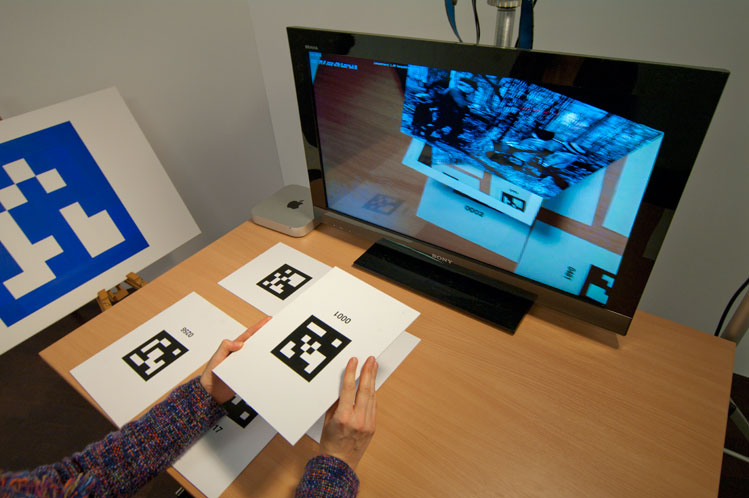 |
|
Audiovisual three dimensional virtual worlds are linked to the geometric patterns of the plates and the painting; whenever the artificial eye of the installation glimpses any of them, floating artificial objects appear on the video-screen, emitting a speaker's voice, reading out sentences from an essay by Gilbert Keith Chesterton. The sentences sound either in English or Hungarian, depending of the patterns they linked to. As the camera scans the table and the painting, the installation performs as an artificial choir where the independent audiovisual virtual worlds either emphasize or black out each other: every sentence appears first quietly, then their volumes increases and fades out as the camera moves along. |
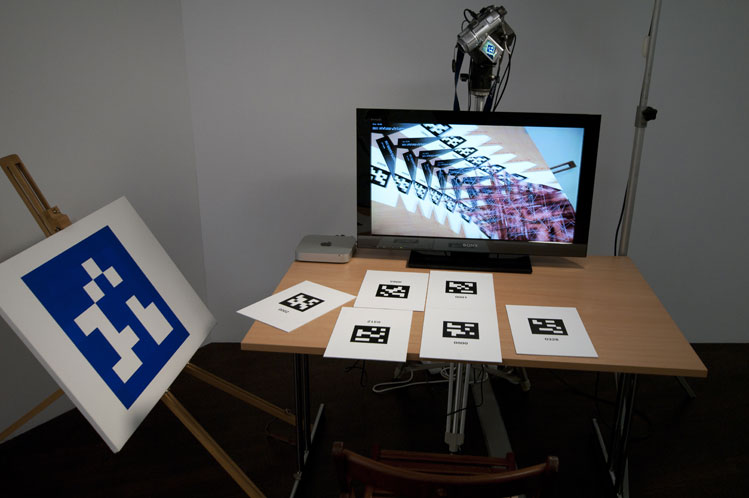 |
|
The performed sentences from Chesterton's essay (Watts' Allegorical Paintings) are the following:
|
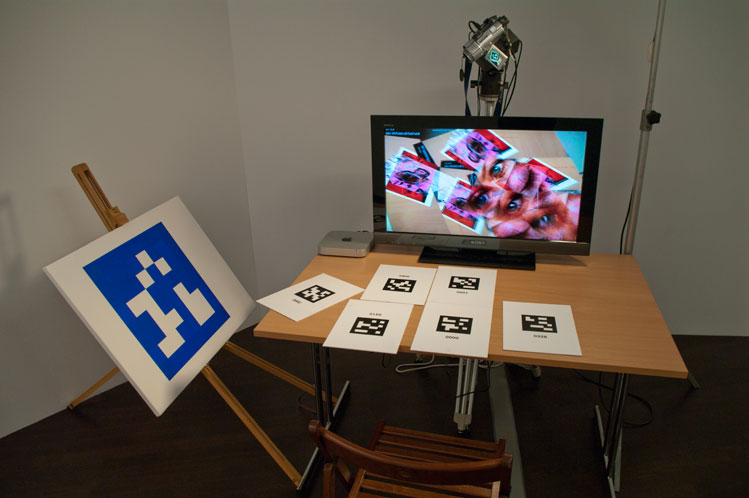 |
|
The hungarian sentences are performed in my (free) translation:
|
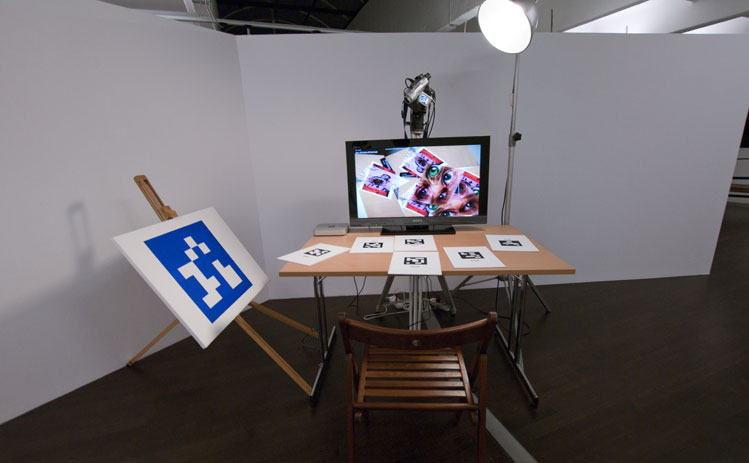 |